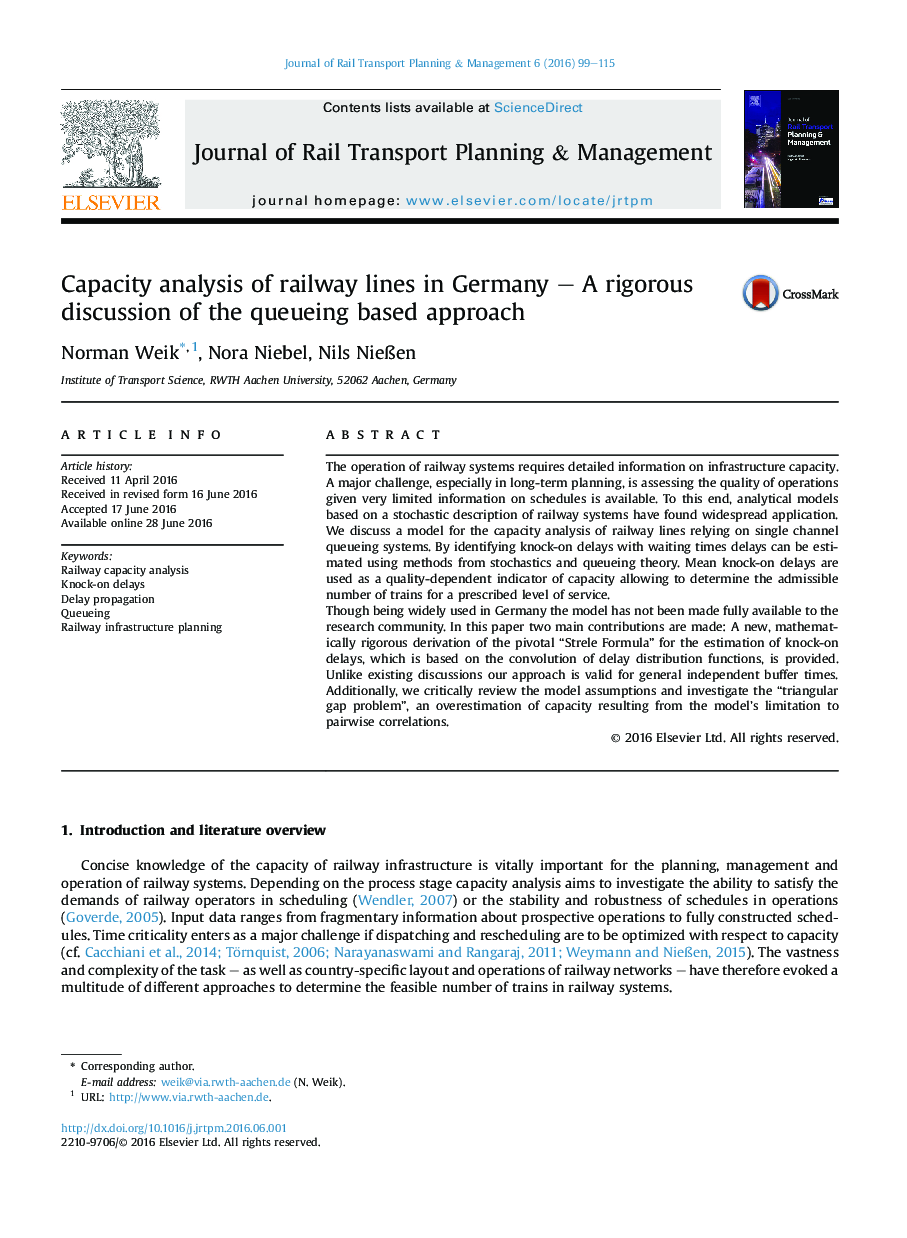| Article ID | Journal | Published Year | Pages | File Type |
|---|---|---|---|---|
| 4923672 | Journal of Rail Transport Planning & Management | 2016 | 17 Pages |
â¢A stochastic model for capacity analysis of railway lines with application in long term planning is discussed.â¢A generalization of an approach widely used in Germany is derived which is valid for a wide range of timetable requirements.â¢The model's limitations on lines with intersections are investigated and a solution is provided.
The operation of railway systems requires detailed information on infrastructure capacity. A major challenge, especially in long-term planning, is assessing the quality of operations given very limited information on schedules is available. To this end, analytical models based on a stochastic description of railway systems have found widespread application. We discuss a model for the capacity analysis of railway lines relying on single channel queueing systems. By identifying knock-on delays with waiting times delays can be estimated using methods from stochastics and queueing theory. Mean knock-on delays are used as a quality-dependent indicator of capacity allowing to determine the admissible number of trains for a prescribed level of service.Though being widely used in Germany the model has not been made fully available to the research community. In this paper two main contributions are made: A new, mathematically rigorous derivation of the pivotal “Strele Formula” for the estimation of knock-on delays, which is based on the convolution of delay distribution functions, is provided. Unlike existing discussions our approach is valid for general independent buffer times. Additionally, we critically review the model assumptions and investigate the “triangular gap problem”, an overestimation of capacity resulting from the model's limitation to pairwise correlations.
